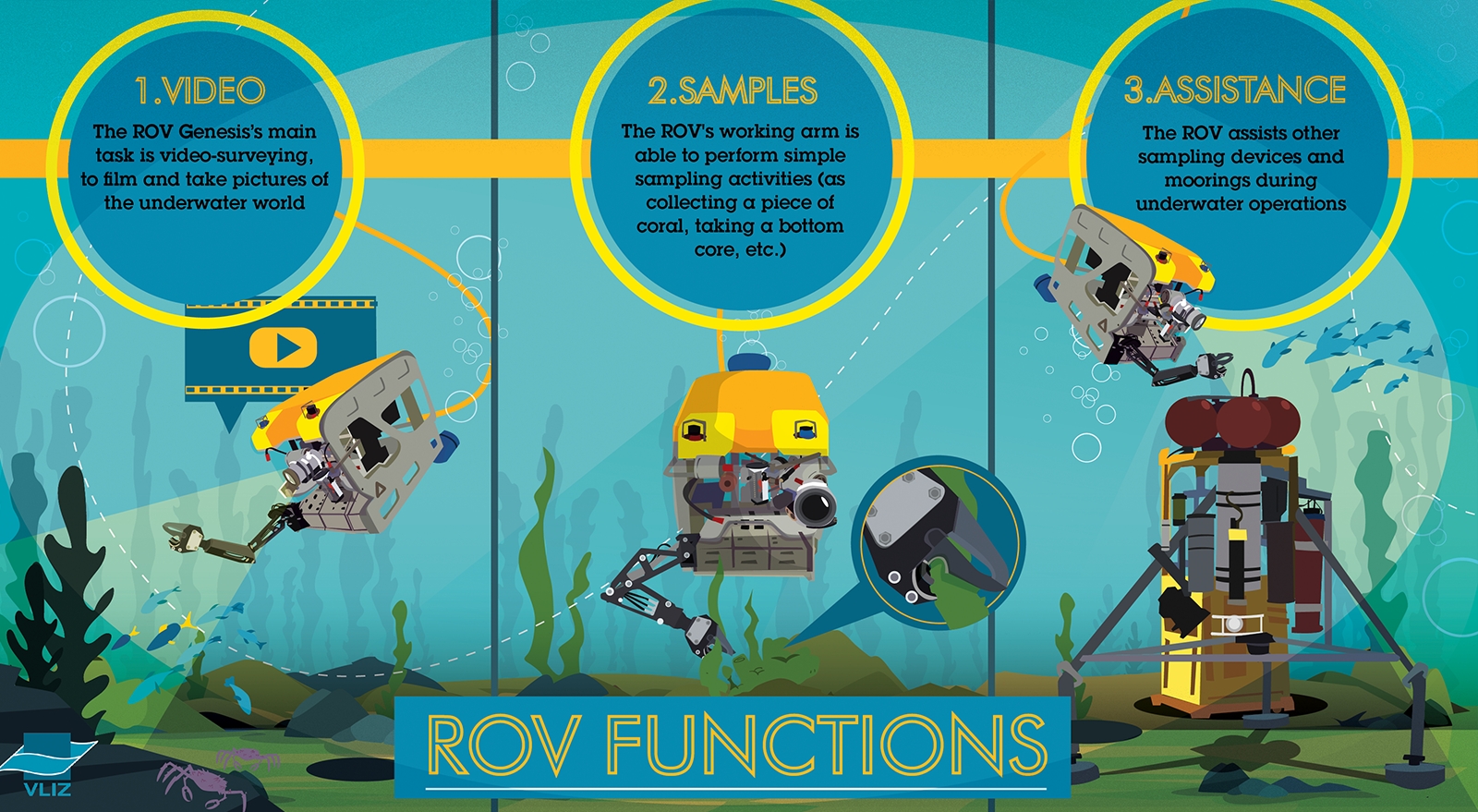11 / 09 / 2017

Photo: VLIZ puts the ROV Genesis at the disposal of the entire marine research community for both national and international research campaigns - VLIZ
VLIZ deploys the Remotely Operated Vehicle (ROV) Genesis nationally, for research in the Belgian part of the North Sea, and internationally, mostly for deep sea research. VLIZ does so at its own initiative or by request of national or international marine research groups.
The ROV Genesis can dive up to depths of 1300 m. During international campaigns, the ROV often roams the deep sea to explore little-known ocean margins and their corresponding biodiversity. The vehicle shoots videos and samples deep sea canyons, cold water coral reefs, carbon mounds, mud volcanos, methane seeps, etc.
Since 2015, the ROV Genesis is also deployed in the Belgian part of the North Sea, from the RV Simon Stevin, to learn more about the fauna of shallow coastal waters and to investigate shipwrecks and seafloor structures.
The ROV fits into a ‘Tether Management System’ (TMS), some sort of garage, that conveys the ROV to the seabed, where the unmanned underwater vehicle starts its explorations. A cable connects the TSM to the research vessel, while the ROV itself is at its turn connected to the TSM through a cable. Genesis is directed in its movements by a pilot in a control room – a container mounted on the research vessel- who follows all action on screens. Six propulsion motors power the ROV. An accurate positioning system tracks the position of the research vessel, the ROV and, when needed, other equipment.
The ROV is equipped with a variety of lights and high-resolution cameras, as well as a laser-measuring system. A hydraulic working arm can perform simple samplings. Depth, course, height, swell and slope are continuously registered, as are the water temperature and salinity.
The main function of the ROV is the collection of pictures and video material. Especially at depths that are not accessible to divers, the ROV can be used to obtain images of the often mysterious deep-sea world. Also important is the hydraulic working arm that can perform simple tasks, such as the sampling of cold water coral fragments or small bottom cores. Finally, the ROV can assist other underwater equipment by offering extra lighting, by offering the hydraulic working arm as a ‘helping hand, or by serving as an extra pair of ‘eyes’ underwater.
ROV Genesis has been operational since 2006 and has explored as good as every ocean basin in the Atlantic and Indian oceans, the Southern Pacific Ocean and the Antarctic Ocean. So far, the ROV has been involved in 26 campaigns. Putting the ROV at the disposal of the worldwide marine research community remains the primary objective, both in research initiated by VLIZ as well as at the request of other marine research groups.
If you, as a scientific institute, would like to make use of the ROV, please contact infrastructuur@vliz.be.
- Have a look at the brand-new animated video that illustrates the working and the functions of the ROV Genesis.
- More technical specificatons about the underwater robot can be consulted on the equipment page.
- An infographic gives an overview of the functions of the ROV.
- General information about the Genesis can be read on its web page.